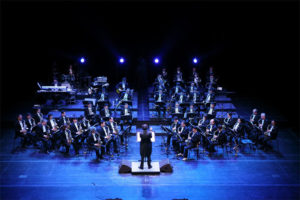
by Deborah Newmark, AFM Symphonic Services Division Symphonic Electronic Media Director
On April 15, after 18 months of extremely difficult bargaining, the AFM and the Symphony, Opera and Ballet Employers’ Electronic Media Association (EMA) reached agreement on a successor Integrated Media Agreement (IMA). The term of the new agreement is June 14, 2019 through June 30, 2022.
The AFM national media committee for these negotiations, led by AFM International President Ray Hair, maintained a steadfast commitment to achieving a fair and balanced agreement. The committee included International Conference of Symphony and Opera Musicians (ICSOM) and Regional Orchestra Players Association (ROPA) media committees as well as a number of local officers, AFM staff, and esteemed counsel, Patricia Polach and Rochelle Skolnick. The EMA represents 94 US orchestras and it is the musicians in these orchestras that ratified the new agreement.
To be a signatory to the IMA, an orchestra must have a collective bargaining agreement with their local, a permanent roster, and an orchestra committee. The AFM soon will begin offering the new IMA to eligible symphony, opera, and ballet institutions that prefer to sign the agreement with the AFM on an individual employer basis.
Highlights of the New Agreement
The committee felt strongly that wages for audio streaming had to be increased, as this medium has become the primary vehicle for distribution of symphony, opera, and ballet product. Toward that goal, and in a thorough analysis of the state of other methods of distribution that have decreased in popularity, we conceived of and reached agreement on a Multi-Platform Rate (new Article X). This concept succeeds in achieving the much-needed increase in streaming rates while bundling other mediums of release into a single rate of 6% of weekly scale.
The employer must continue to maintain ownership and control of product but can enter into licensing agreements for distribution. Under this provision, the orchestra committee must participate in an artistic and financial consultative process with the employer, after having received detailed documentation including any licensing arrangements. The orchestra committee is also responsible for approving projects on a case-by-case basis.
There is a new provision called the Annual Media Commitment Payment that replaces the Audio Buffet. It requires the employer to commit to an annual media payment at one of three different payment levels for an additional 3%, 4%, or 5% of base annual salary with accompanying minimum payment requirements for each level. In exchange for making a commitment to an annual media payment, the employer receives specific discounts on IMA rates.
Payment floors that represent minimum requirements for all wages that are based on a percentage of local scale have increased 1% at ratification and then 2% each year of the three-year agreement. Per-minute television rates have increased 2%. Pension contributions increased to 13.2%, consistent with the August 1, 2018 Pension Rehabilitation Plan of the AFM-EPF.
One area in the prior agreement that generated the highest number of disputes and grievances was the promotional provisions, especially when the employer provided content to third parties. This was particularly problematic in the realm of broadcasts and streams of performances of the “Star-Spangled Banner” at sporting events that the EMA believed did not require media compensation. While we have always worked to find a balance between fair compensation for musicians while creating meaningful opportunities for the institution to promote itself, we were not going to agree to promotional provisions that would eliminate the need for the employer to engage in future paid-for media product.
The balance achieved provides payment for broadcasts and streams of live performances of the national anthem at “premium games.” It also ensures that any promotional activity provides recognition to the orchestra and its musicians. Promotional clips cannot be used as underscoring or backing tracks or as a jingle that would otherwise be covered under the AFM’s Commercial Announcements Agreement. Expanded third-party use cannot occur in the absence of orchestra committee approval. In addition, any third party that qualifies to use a promotional clip must sign an agreement with the employer ensuring payment in the event of a misuse. The employer has 30 days to cure an infringement for material they provide to a third party before becoming liable and must then enter into and fulfill all conditions required by the appropriate AFM Agreement.
Another new provision allows for capture by audience members at outdoor concerts and the ability for the audience to share material on social media in limited circumstances. There is also a provision to allow capture by audience members at up to two formal indoor concert programs and up to four informal indoor events per season. The employer must come to the orchestra committee in advance for approval.
Orchestra committee approval must also be sought when responding to requests from conductors, composers, soloists, and musicians of the orchestra for a private use recording. A private use tape agreement must be signed by the individual making the request in order to receive the recording. In addition, for personal study purposes only, the music director and the musicians of the orchestra can obtain access to a stream of materials via a password-protected portal.
In the realm of revenue participation, where we had encountered numerous problems in the past, the committee sought and achieved a much-needed change to the system. Instead of a 60% net revenue distribution after direct costs are recouped, there is now a new system that will share 55% of gross revenue after deducting solely musicians’ costs—nothing else. This should make it easier to see revenue distributions from the exploitation of our product.
In Conclusion
These were challenging negotiations where the union was represented by a strong and educated committee who went up against employers determined to erode hard-fought standards in the symphonic industry. Not only was there success in addressing the pressing need to increase payments for streaming, the new agreement also ensures that symphonic musicians continue to receive fair compensation for all of their media work while also expanding the platform for institutions to continue to promote themselves to ensure a healthy future for the symphony, opera, and ballet community.






